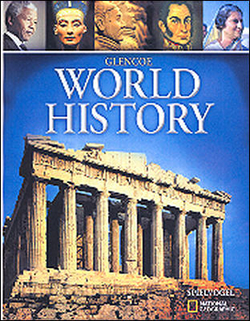Glencoe World History © 2010Chapter 29:
Latin AmericaChapter OverviewsEconomic crises after World War II brought military rule in some Latin American countries and revolution in others. Democracy did not take hold in most of Latin America until the late twentieth century. Section 1 General Trends in Latin America
During the Great Depression, Latin American leaders encouraged the development of local industries. The policy failed to end Latin America's dependence on the advanced industrial nations largely because the new industries had to import most of their supplies and equipment and failed to find markets for their goods. Economic problems led to political instability and dictatorships. The pressure of mounting foreign debt in the 1980s helped end the dictatorships. Newly formed democracies had to face urban crowding, poverty, and the international drug trade. The Formation of the Organization of American States (OAS) encouraged cooperation in the Western Hemisphere and called for an end to military action by one state in the affairs of another. However, the United States continued to intervene in Latin America. Latin American artists and writers have had a prominent role in society. Magic realism has been an important literary contribution. Section 2 Mexico, Cuba, and Central America
Political and economic crises in Mexico, Central America, and the Caribbean sometimes resulted in revolution and at other times brought foreign intervention or gradual political change. In Mexico economic and political challenges gradually convinced the ruling party to let other parties compete for power. In 2000 Vicente Fox was elected president of Mexico, ending more than seven decades of PRI rule. Fidel Castro's Communist government came to power in Cuba in 1959 and remained in control after the collapse of the Soviet Union despite deteriorating economic conditions. His brother Raul replaced him in 2008. In El Salvador, the United States provided military aid to crush leftist guerrillas. A 1992 peace settlement ended the war after at least 75,000 people died. In the late 1970s, the Marxist Sandinistas overthrew the Somoza-family dictatorship in Nicaragua. After a civil war with American-backed Contra rebels, Nicaragua held elections and the Sandinistas were defeated. In Panama, ruler Manuel Noriega became involved in the drug trade. U.S. troops invaded the country in 1989 and jailed Noriega on drug-trafficking charges. In Guatemala a brutal civil war ended in 1996.
Section 3 The Nations of South America
Many countries in South America alternated between elected government and military rule during the second half of the twentieth century. Now into the twenty–first century, these countries are largely democratic. In the 1970s, Chile's Marxist president Salvador Allende was killed by military forces led by Augusto Pinochet who set up a dictatorship. Protests against human rights abuses under Pinochet eventually forced him to restore democracy and he lost the 1989 election. Chile became a stable democracy with steady economic growth. Argentina's Juan Peron was a highly popular dictator in the 1950s. In 1983 democracy was restored to Argentina after the failed invasion of the Falkland Islands. Brazil's "economic miracle" in the 1960s led to high inflation. In the 1980s democracy returned to Brazil. In 2002 Brazil elected Luiz Inacio Lula da Silva, its first left-wing president in four decades. Instability and peasant unrest in Peru brought a return to dictatorship under the elected leader Alberto Fujimori. His ouster in 2000 restored democracy. Colombia's democracy is very old but has been wracked by problems and has often involved harsh repression. Lawless drug cartels have been a continual problem. A series of military dictators ruled Venezuela during the first half of the twentieth century. Hugo Chavez led a failed coup against the government in 1992. He ran for president and won in 1998.  | 
















